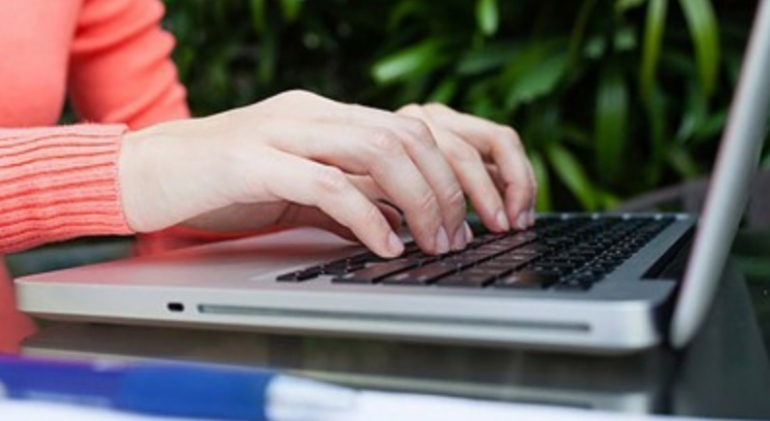Decoding the Consumer Mind: A Psychological Guide to E-commerce Marketing
— October 27, 2014Introduction
Psychology plays a pivotal role in marketing strategies, particularly when it comes to influencing consumer behavior. Understanding the psychological triggers that drive purchasing decisions can give businesses an edge in crafting more compelling campaigns.
By integrating these principles, businesses, especially e-commerce stores, can fine-tune their marketing strategies to resonate with consumers on a deeper level. This approach ensures that products and services are not only visible but are perceived as essential, driving higher engagement, conversions, and customer loyalty.
1. Understanding Consumer Behavior: The PsychologyBehind Purchases
Consumer psychology refers to the study of how emotions, perceptions, and motivations influence buying behavior. Basic principles of consumer psychology show that people often make decisions based on emotions rather than rational thought. Emotional triggers such as fear, joy, trust, or excitement can compel consumers to act quickly, often bypassing logical thinking. In e-commerce, understanding these emotional drivers allows businesses to tailor their messaging in a way that taps into these impulses.
The importance of trust and credibility cannot be overstated in online shopping. Consumers tend to make purchase decisions when they feel secure in the legitimacy of the brand. This trust is established through clear communication, social proof (such as reviews), secure payment options, and transparent return policies. E-commerce stores that build and maintain trust stand out, especially in markets where consumers are increasingly wary of fraud and scams.
2. The Power of Social Proof: How Reviews and Testimonials Influence Decisions
Social proof is a psychological phenomenon where people rely on the actions and opinions of others to guide their decisions. When potential customers see that others have had positive experiences with a product or service, they are more likely to trust the brand and make a purchase themselves. In e-commerce, this is often seen through customer reviews, ratings, and testimonials. These elements serve as a powerful form of social proof, helping to reduce uncertainty and build trust in a brand.
Case studies and testimonials, particularly when shared by well-known influencers or customers with similar demographics to the target audience, can have a significant impact on conversion rates. Real-life examples of social proof boosting conversions can be found in companies that prominently display customer ratings on their product pages. These companies often see increased sales as a result of demonstrating the satisfaction of past buyers, which helps potential customers feel more confident in their decisions.
3. Scarcity and Urgency: Motivating Action through Limited-Time Offers
The psychology of scarcity suggests that people perceive scarce items as more valuable, creating a sense of urgency to purchase before the opportunity disappears. This principle is often used in e-commerce with strategies such as limited-time offers, countdown timers, or highlighting low stock levels. When customers see that a product is in limited supply, they are more likely to act quickly for fear of missing out.
Using countdown timers on product pages or during checkout can prompt customers to make quicker decisions. However, it is essential to balance urgency with customer satisfaction. If a store uses scarcity tactics too often, it may lose its impact. Additionally, it’s important that these offers are genuine—misleading consumers with false claims of scarcity can erode trust and negatively impact long-term sales.
4. Personalization: Tailoring the Shopping Experience
Personalization in marketing is more than just addressing customers by name in emails. It involves using data to tailor the shopping experience to the individual needs, preferences, and past behaviors of each customer. The psychological effect of personalization is powerful: consumers feel valued and understood when their shopping experience reflects their unique tastes. This sense of recognition increases the likelihood of engagement and purchase.
Personalized product recommendations, based on browsing history or previous purchases, make the shopping experience feel more relevant. Automation tools that enable dynamic content and targeted ads further enhance this approach by delivering tailored messages that resonate with the consumer. For instance, e-commerce platforms often use algorithms to suggest products that customers are more likely to be interested in, improving both customer satisfaction and conversion rates.
5. The Anchoring Effect: Pricing Strategies That Maximize Value Perception
The anchoring effect is a cognitive bias where people rely heavily on the first piece of information they encounter (the “anchor”) when making decisions. In pricing, this means that the first price a consumer sees can influence how they perceive the value of subsequent prices. For example, a high-priced product can make a mid-range product seem like a good deal by comparison. This strategy is commonly used in e-commerce by showing a “regular” price next to a “sale” price, making the discount seem more significant.
E-commerce stores can also increase the average order value by offering product bundles or upselling premium options. When a customer is presented with a higher-priced option first, they may perceive the lower-priced alternative as a better value. This pricing strategy leverages the anchoring effect to influence consumer behavior without resorting to manipulative tactics.
6. Colors and Design: The Visual Influence on Buyer Behavior
Color plays a significant role in influencing emotions and decision-making processes. Different colors evoke different feelings, and e-commerce stores can use this knowledge to guide consumer behavior. For example, blue is often associated with trust and reliability, making it a common color for websites that want to establish credibility. Red can create a sense of urgency and excitement, making it ideal for sales or clearance sections.
In addition to color, website design itself can impact buying behavior. A clean, intuitive layout can make navigation smoother, leading to quicker decision-making. E-commerce stores should prioritize user-friendly designs that allow consumers to find products easily and make a purchase with minimal friction. Optimizing the layout for quick decisions ensures that customers do not get frustrated and abandon their carts, thus improving conversion rates.
7. Reciprocity: Giving to Receive
The principle of reciprocity is rooted in the psychological concept that when someone gives us something, we feel an obligation to return the favor. In marketing, this is often used to encourage conversions. Offering something for free, such as a lead magnet or free trial, creates a sense of indebtedness in the customer, making them more likely to purchase a product or service in return.
In e-commerce, common examples of reciprocity include offering free shipping, a gift with purchase, or a discount for first-time buyers. These small gestures can go a long way in fostering customer loyalty and encouraging repeat business. Reciprocity strategies, when used thoughtfully, can build long-lasting relationships with customers and increase lifetime value.
8. The Power of Storytelling: Connecting Emotionally with Customers
Storytelling is one of the most effective ways to engage customers on an emotional level. People are naturally drawn to stories because they evoke emotions, which influence decision-making. When a brand crafts a compelling narrative that resonates with its target audience, it establishes a connection that goes beyond the transactional nature of most commercial interactions.
In e-commerce, storytelling can be integrated into product descriptions, brand messaging, and marketing campaigns. A well-crafted brand story that reflects the values and lifestyle of the target market can create a strong emotional bond, increasing the likelihood of a purchase. For instance, an online clothing store might tell the story of how its products are ethically made, appealing to customers who value sustainability. This emotional connection can lead to higher engagement and brand loyalty.
9. Cognitive Biases in Marketing: Leveraging MentalShortcuts
Cognitive biases are mental shortcuts that help people make decisions quickly, but they can also lead to errors in judgment. In marketing, understanding and leveraging these biases can influence consumer behavior. Some common biases include authority bias, where people trust experts or influencers; confirmation bias, where individuals seek information that confirms their beliefs; and the halo effect, where positive impressions of one aspect of a product influence the overall perception of the brand.
Marketers can use these biases to their advantage by aligning their campaigns with what customers already believe or expect. For example, showcasing endorsements from respected figures or providing social proof can exploit authority bias. However, it is crucial to use these biases ethically to avoid misleading or manipulating customers.
10. Optimizing the User Experience: Streamlining the Customer Journey
An intuitive, frictionless user experience is essential for e-commerce success. The psychological impact of a seamless journey from discovery to purchase cannot be overstated. Consumers are more likely to complete a purchase if the process is easy, fast, and frustration-free. Simple navigation, fast load times, and a clear, easy-to-follow checkout process can reduce cart abandonment and increase conversions.
E-commerce stores should focus on reducing any barriers to purchase, such as complicated forms or unclear calls to action. Streamlining the checkout process, offering multiple payment options, and providing clear, concise information can all contribute to a smoother user experience. When customers feel that the path to purchase is easy and clear, they are more likely to convert.
Conclusion
The psychological principles discussed in this article offer a powerful toolkit for improving e-commerce marketing strategies. By understanding consumer behavior, leveraging social proof, using scarcity and urgency effectively, personalizing the shopping experience, and employing various psychological tactics such as reciprocity and storytelling, businesses can significantly enhance their marketing effectiveness. These strategies not only increase conversions but also build long-term customer loyalty. For companies considering outsourcing software products, integrating these psychological insights into the marketing efforts can provide a competitive advantage, driving sustained growth and success.







